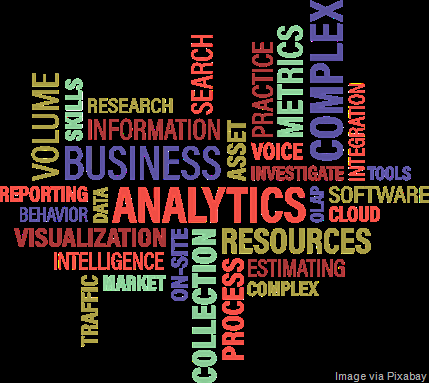 More than ever, businesses need to take full advantage of automation, data, and analytics to run their business more productively and competitively. Yet, in my role as a small business advisor, I still see many founders and executives who see data and analytics primarily as a measurement device on current results, rather than using it to evolve the business strategy and direction.
More than ever, businesses need to take full advantage of automation, data, and analytics to run their business more productively and competitively. Yet, in my role as a small business advisor, I still see many founders and executives who see data and analytics primarily as a measurement device on current results, rather than using it to evolve the business strategy and direction.
Certainly it’s important to optimize current operations, but in this age of rapidly changing demands and competitors, it’s more important change quickly as the market changes. I was reminded of the critical need to change, and how, in a new book, “The Caterpillar's Edge: Evolve, Evolve Again, and Thrive in Business,” by Sid Mohasseb, former head of KPMG’s Strategic Innovation Practice.
Mohasseb details a set of insight boosters to channel your change decisions, and using data and analytics differently are among the key ones:
-
Commit that data and analytics will drive strategic decisions. View and leverage data as an asset for future decisions, not just a measure of past actions. The first step is to get the data and analysis to all the right people. Strategic decision makers need to see the data, in addition to marketing and sales. Ask for analysis rather than reams of data.
-
Always remember it’s about the problem, not the solution. Don’t start with finding what you want – having a specific end in mind assumes you have knowledge of the future. Recognize that the problem and needs will shift. Let the data and the analytics suggest the questions you need to ask, not the answers. It’s the begin point, not the end.
-
Control your urges to solve first and justify with data later. To gain new insight, always look to disprove yourself. Allow your conventional assumptions to be challenged. We all have the human tendency to read data as supporting our own biases. Be sure to get multiple views of insights and implications from advisors that you trust.
-
Avoid getting only a filtered view of the world. Too much reliance on automated filtering may result in missing key issues and rehashing the problems framed up in the past. Sometimes a look at the raw numbers, in addition to trend reports, will trigger a new question, and lead to insights otherwise overlooked. Seek a variety of analysis tools.
-
Keep up on the details, but don’t miss the big picture. Using big data and analytics is a balancing act – some people get bogged down in the details, and ignore the bigger messages, while others miss short-term corrections that can make a big difference. Make sure you have team members covering both domains, to balance your decision input.
-
You are the business scientist, to balance data scientists. You can delegate the technology infrastructure issues and decisions to the CTO or CIO, and data gathering and cleansing matters to the new chief data officers, but don’t delegate your business strategy role. Your tech guys may know how to read data, but you must read the market.
-
You don’t need to be exhaustive in capturing all signals first. Start now to recognize and evaluate signals and changes from a growth, risk, and efficiency perspective. Be acutely aware of the value exchange dynamics between stakeholders, and sensitive to the urgency of reading changes before competitors, rather than following the crowd.
As important as it is to add insight boosters, you also need to change any addictions you have to traditional planning processes, fixed budgets, and reliance on ultra-optimistic revenue projections. Your team needs to know that it is safe to experiment, and failure is not a toxic result. Use data to unleash and reward the power in your team for imagination, action, and innovation.
As author Mohasseb indicates, you have to be able to evolve your business as quickly and smoothly as a caterpillar evolves into a butterfly, so that you can soar with the wind. Don’t be one of the many small businesses I see that crawls along at a snail’s pace, and ultimately gets stepped on by the competition. Keep your eye on the data and the analytics.

